 | TODAY IN SCIENCE HISTORY
NEWSLETTER - 22 DECEMBER |
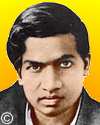 On 22 Dec 1887, Srinivasa Ramanujan was born in India, where he taught himself mathematics to a level regarded as genius without formal training. He introduced himself by letter, with some of his mathematical work, to Cambridge mathematician G.H. Hardy, who recognized the talent shown in the papers he received. Ramanujan was invited to travel to England for a research scholarship at Cambridge. After three years of a productive collaboration with Hardy, Ramanujan took ill, and never really recovered. So he returned home to India, where he subsequently died on 26 Apr 1920, having reached the age of only 32. The cause has been commonly attributed, but perhaps misattributed, to tuberculosis. But some shrewd analysis of remaining documentation of Ramanujan's medical records studied by D.A.B. Young was published in Jan 1994. The detective work to come up with a more satisfactory diagnosis reads like a mystery story. In The Mystery of Srinivasa Ramanujan's Illness you can trace a possible answer to whether it was tuberculosis, or something else that could have been cured, and saved one of the most remarkably gifted mathematicians to complete more of the research that he had started. Ramanujan remains a national hero in India, and his death at an early age is mourned. It remains a mystery both tantalizing and sad. On 22 Dec 1887, Srinivasa Ramanujan was born in India, where he taught himself mathematics to a level regarded as genius without formal training. He introduced himself by letter, with some of his mathematical work, to Cambridge mathematician G.H. Hardy, who recognized the talent shown in the papers he received. Ramanujan was invited to travel to England for a research scholarship at Cambridge. After three years of a productive collaboration with Hardy, Ramanujan took ill, and never really recovered. So he returned home to India, where he subsequently died on 26 Apr 1920, having reached the age of only 32. The cause has been commonly attributed, but perhaps misattributed, to tuberculosis. But some shrewd analysis of remaining documentation of Ramanujan's medical records studied by D.A.B. Young was published in Jan 1994. The detective work to come up with a more satisfactory diagnosis reads like a mystery story. In The Mystery of Srinivasa Ramanujan's Illness you can trace a possible answer to whether it was tuberculosis, or something else that could have been cured, and saved one of the most remarkably gifted mathematicians to complete more of the research that he had started. Ramanujan remains a national hero in India, and his death at an early age is mourned. It remains a mystery both tantalizing and sad. |
 On 22 Dec 1887, Srinavasa Ramanujan was born in India, a remarkably gifted mathematician, who died at age 32, leaving rich lode of original mathematics that is still being mined today. He has since beome a folk hero in his native country. Today's Science Store pick is: The Man Who Knew Infinity: A Life of the Genius Ramanujan, by Robert Kanigel, whose biography traces Ramanujan as a self-taught mathematical prodigy whose prowess was recognised and fostered by eminient English mathematician G. H. Hardy, after which his work was brought to the attention of the world. It is available New from $8.08. Used from $3.60. (As of time of writing.). On 22 Dec 1887, Srinavasa Ramanujan was born in India, a remarkably gifted mathematician, who died at age 32, leaving rich lode of original mathematics that is still being mined today. He has since beome a folk hero in his native country. Today's Science Store pick is: The Man Who Knew Infinity: A Life of the Genius Ramanujan, by Robert Kanigel, whose biography traces Ramanujan as a self-taught mathematical prodigy whose prowess was recognised and fostered by eminient English mathematician G. H. Hardy, after which his work was brought to the attention of the world. It is available New from $8.08. Used from $3.60. (As of time of writing.). | | For picks from earlier newsletters, see the Today in Science History Science Store home page. | |
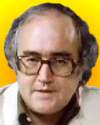 | Why should we look to the past in order to prepare for the future? Because there is nowhere else to look. - James Burke, Northern Irish science writer and historian (born 22 Dec 1936).  |
 | Replying to G. H. Hardy's suggestion that the number of a taxi (1729) was “dull”: No, it is a very interesting number; it is the smallest number expressible as a sum of two cubes in two different ways, the two ways being 13 + 123 and 93 + 103. - Srinivasa Ramanujan, Indian mathematician (born 22 Dec 1887).  |
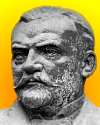 | How did I discover saccharin? Well, it was partly by accident and partly by study. I had worked a long time on the compound radicals and substitution products of coal tar... One evening I was so interested in my laboratory that I forgot about my supper till quite late, and then rushed off for a meal without stopping to wash my hands. I sat down, broke a piece of bread, and put it to my lips. It tasted unspeakably sweet. I did not ask why it was so, probably because I thought it was some cake or sweetmeat. I rinsed my mouth with water, and dried my moustache with my napkin, when, to my surprise the napkin tasted sweeter than the bread. Then I was puzzled. I again raised my goblet, and, as fortune would have it, applied my mouth where my fingers had touched it before. The water seemed syrup. It flashed on me that I was the cause of the singular universal sweetness, and I accordingly tasted the end of my thumb, and found it surpassed any confectionery I had ever eaten. I saw the whole thing at once. I had discovered some coal tar substance which out-sugared sugar. I dropped my dinner, and ran back to the laboratory. There, in my excitement, I tasted the contents of every beaker and evaporating dish on the table. - Constantin Fahlberg, Russian chemist (born 22 Dec 1850).  |
| Before you look at today's web page, see if you can answer some of these questions about the events that happened on this day. Some of the names are very familiar. Others will likely stump you. Tickle your curiosity with these questions, then check your answers on today's web page. |
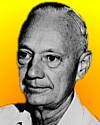 | Grote Reber, born 22 Dec 1911, was a U.S. astronomer and engineer who built the first of a new type of telescope and was largely responsible for the early development of a new branch of astronomy, opening an entirely new research front in the study of the universe.
 What type of new telescope did he build? |
 | On 22 Dec 1850, Constantin Fahlberg was born, a Russian chemist who, while working for Ira Remsen on coal tar compounds, discovered saccharin. The compound is 220 times sweeter than sugar. The factory he established manufactured it by the the ton, making him wealthy.
 In which country did Constantin establish his first factory for saccharin? |
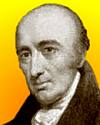 | William Hyde Wollaston (1766-1828) was a British scientist whose original powder-metallurgy techniques served as a model for the modern industrial processing of platinum, tungsten, molybdenum, and other transition metals. His studies of platinum also resulted in his discovery of two related elements.
 What were the two elements he discovered? |
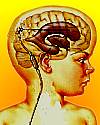 | John Holter (1916-2003) was an American inventor a medical device used in the treatment of hydrocephalus. His motivation was the need to treat his son who had that conditin develop whortly after birth. He refined and patented the device, which subsequently helped millions around the world since the late 1950s.
 What is the common name for hydrocephalus? |
 | On 22 Dec of a certain year, the first string of Christmas Tree lights was created by Thomas Edison's associate, Edward H. Johnson. He decorated a Christmas tree at his home. Previously, trees were decorated with wax candles from the early days of the Christmas tree tradition.
 In which decade was this first string of Christmas lights created? |
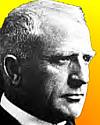 | On 22 Dec 1885, the first U.S. patent for a switchback railway was issued to L.A. Thompson. It began in 1884, when La Marcus Thompson, the “Father of the Gravity Ride,” opened a 600-foot switchback railway. With a top speed of six miles per hour, Thompson's ride was little more than a leisurely, gravity-powered tour of the beach.
 Where did Thompson open his first switchback railway? |
When you have your answers ready to all the questions above, you'll find all the information to check them, and more, on the December 22 web page of Today in Science History. Or, try this link first for just the brief answers.
Fast answers for the previous newsletter for December 21: X-ray irradiation • Scottish • steel railroad rails • James Parkinson • decade containing the year 1933 • Snow White and the Seven Dwarfs. |
 If you enjoy this newsletter, the website, or wish to offer encouragement or ideas, please send feedback by using your mail reader Reply button. If you enjoy this newsletter, the website, or wish to offer encouragement or ideas, please send feedback by using your mail reader Reply button.
Your click on a StumbleUpon, Google+ or Facebook social button on the site webpages is also a welcome sign of appreciation. Thank you for using them. |
To find citations for quotations go to the corresponding webpage by clicking on the “quotes” balloon icon. Sources for the thumbnails appear on today's webpage with the corresponding item.
� This newsletter is copyright 2013 by todayinsci.com. Please respect the Webmaster's wishes and do not put copies online of the Newsletter � or any Today in Science History webpage. (If you already have done so, please remove them. Thank you.) Offline use in education is encouraged such as a printout on a bulletin board, or projected for classroom viewing. Online, descriptive links to our pages are welcomed, as these will provide a reader with the most recent revisions, additions and/or corrections of a webpage. For any other copyright questions, please contact the Webmaster by using your mail reader Reply button. |
--
If you do not want to receive any more newsletters,
Unsubscribe To update your preferences and to unsubscribe visit
this link 


 On 22 Dec 1887, Srinivasa Ramanujan was born in India, where he taught himself mathematics to a level regarded as genius without formal training. He introduced himself by letter, with some of his mathematical work, to Cambridge mathematician G.H. Hardy, who recognized the talent shown in the papers he received. Ramanujan was invited to travel to England for a research scholarship at Cambridge. After three years of a productive collaboration with Hardy, Ramanujan took ill, and never really recovered. So he returned home to India, where he subsequently died on 26 Apr 1920, having reached the age of only 32. The cause has been commonly attributed, but perhaps misattributed, to tuberculosis. But some shrewd analysis of remaining documentation of Ramanujan's medical records studied by D.A.B. Young was published in Jan 1994. The detective work to come up with a more satisfactory diagnosis reads like a mystery story. In The Mystery of Srinivasa Ramanujan's Illness you can trace a possible answer to whether it was tuberculosis, or something else that could have been cured, and saved one of the most remarkably gifted mathematicians to complete more of the research that he had started. Ramanujan remains a national hero in India, and his death at an early age is mourned. It remains a mystery both tantalizing and sad.
On 22 Dec 1887, Srinivasa Ramanujan was born in India, where he taught himself mathematics to a level regarded as genius without formal training. He introduced himself by letter, with some of his mathematical work, to Cambridge mathematician G.H. Hardy, who recognized the talent shown in the papers he received. Ramanujan was invited to travel to England for a research scholarship at Cambridge. After three years of a productive collaboration with Hardy, Ramanujan took ill, and never really recovered. So he returned home to India, where he subsequently died on 26 Apr 1920, having reached the age of only 32. The cause has been commonly attributed, but perhaps misattributed, to tuberculosis. But some shrewd analysis of remaining documentation of Ramanujan's medical records studied by D.A.B. Young was published in Jan 1994. The detective work to come up with a more satisfactory diagnosis reads like a mystery story. In The Mystery of Srinivasa Ramanujan's Illness you can trace a possible answer to whether it was tuberculosis, or something else that could have been cured, and saved one of the most remarkably gifted mathematicians to complete more of the research that he had started. Ramanujan remains a national hero in India, and his death at an early age is mourned. It remains a mystery both tantalizing and sad. 



 What type of new telescope did he build?
What type of new telescope did he build? 
 In which country did Constantin establish his first factory for saccharin?
In which country did Constantin establish his first factory for saccharin? 
 What were the two elements he discovered?
What were the two elements he discovered? 
 What is the common name for hydrocephalus?
What is the common name for hydrocephalus? 
 In which decade was this first string of Christmas lights created?
In which decade was this first string of Christmas lights created? 
 Where did Thompson open his first switchback railway?
Where did Thompson open his first switchback railway?  If you enjoy this newsletter, the website, or wish to offer encouragement or ideas, please send feedback by using your mail reader Reply button.
If you enjoy this newsletter, the website, or wish to offer encouragement or ideas, please send feedback by using your mail reader Reply button. 

Δεν υπάρχουν σχόλια:
Δημοσίευση σχολίου